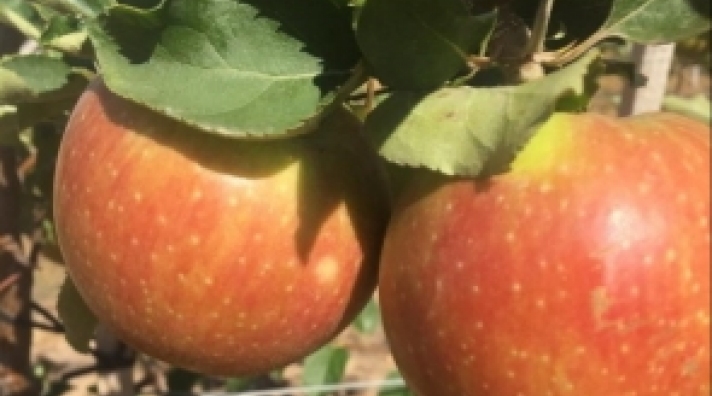
How to tell when apples are ripe and ready to pick?
Need help figuring out if your apples are ripe for picking? Read on for practical tips so there’s no guessing required.
HOW TO UNDERSTAND THAT APPLES ARE RIPE
Here are some tips on how to tell if your apples are ripe for picking.
Knowing the variety of apple you have can help you narrow down when you should start to consider whether or not your apples need picking. Apples and crab apples can typically be classified as early summer (July to mid August), mid-summer (mid-August to early September) or fall apples (mid-September to October).
If you don’t know the variety, no problem, there are plenty of other ways to judge ripeness. Just don’t be fooled into picking your apples just because your neighbours are picking theirs! You may have a different variety and just because they’re picking, doesn’t mean you should!
Start keeping tabs on your apple tree and soon you’ll get a sense of when your apples are typically ready to harvest. Although, some years there can be up to 3 to 4 week differences in harvest times.
Did you know that some apples are best when picked after a frost? You bet! These red fall apples are super sweet and store really well, but aren’t harvested until mid-October.
These rescue crab apples are one of the first to ripen in early August. The ones here are over ripe and have become grainy, but still good for juicing.
Look carefully at the color of your apples, especially the base or ground color – it may be green, creamy or yellow. Watch it change as the apples mature and wait for the entire apple to change. Unless you have a green apple variety like Granny Smith, most apples will turn a softer shade of green or even a creamy yellow when they’re fully ripe.
Pick an apple and slice it open to see what color the pips or seeds are. A ripe apple, no matter what size or variety, will have dark brown pips.
Ease of separation from tree - twist apple for ripeness
Ripe apples come off a tree quite easily – they don’t need to be tugged or pulled. Simply hold the bottom of the apple, lift it against the stem and twist. If it doesn’t come off easily, it’s not ripe.
Use an old fashioned taste test to judge the ripeness of your apples. Unless you have a crab apple or a tart apple variety, your apples should not be sour and make you pucker. It’s amazing how much sweeter your apples will become with a couple of days of sunshine.
Here on the prairies people often pick under ripe apples because they think all prairie apples are sour – which is totally untrue. We have some amazingly sweet apples – you just need to let them ripen!
But don’t wait too long! If you’re apples seem mealy, they’re over ripe.
Dropped apples don’t mean they’re ripe
Dropped apples are not necessarily sign of ripe apples. Check for signs of ripeness before harvesting. But do collect dropped apples to prevent the spread of pests and disease.
Do not judge ripeness by dropped apples alone. If a tree is suffering from environmental stress (too hot, cold, wet or dry), is overloaded or suffers from insect or wind damage it will drop apples prematurely. Use the tips listed above to determine ripeness.
Harvest apples in stages
Not all of the apples on a tree will be ready to harvest at the same time. Typically, apples along the outer edges of the tree will ripen before those towards the center of the tree. Ideally, you’d want to pick apples on more than one day, covering a span of one to two weeks. Picking in this manner will ensure you get consistently ripe apples.